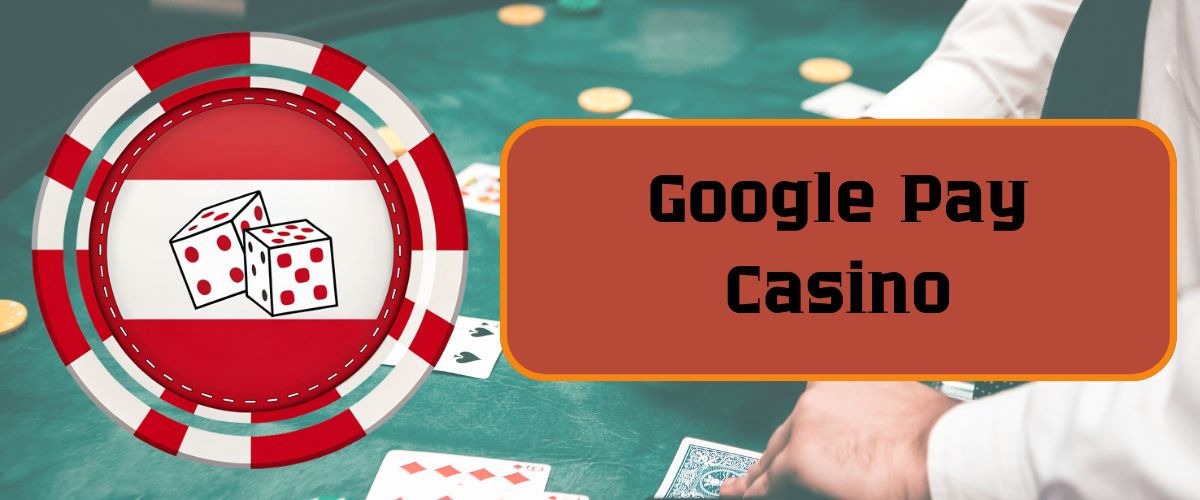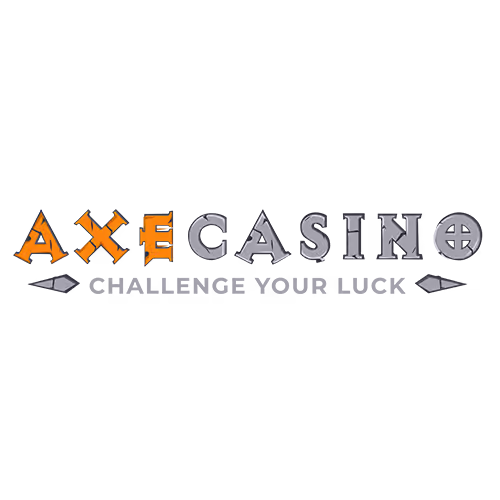Tapping your phone to fund a casino account sounds like something from a sci-fi movie, but that’s basically what Google Pay Casino deposits do — Android users link their card to Google Wallet, tap to deposit, done. No typing card numbers, no memorizing CVVs, just phone meets screen and money moves. Below, I’ll explain why adoption’s been slower than expected in Canada, which casinos actually support it, and whether ditching Interac for Google Pay makes sense.
Ranking the Best Google Pay Casinos
When I test Google Pay casinos, first thing I check is whether they actually accept it — shocking how many sites list it on payment pages but Ontario players get error messages when trying. Then I verify deposits are instant (they should be), check if bonuses activate properly, and test whether withdrawals require switching to different methods.
These picks have confirmed Google Pay availability for Canadian players, tested instant deposit processing, verified bonus eligibility isn’t voided by using Google Pay (some casinos exclude e-wallets, Google Pay falls into grey area), and confirmed withdrawal alternatives work smoothly when you’re ready to cash out.
How I Pick Casinos for Mobile-First Payments
Testing Google Pay means using Android devices (it’s Android-only unless you’re using the web version, which… honestly most people don’t), linking real cards, making actual deposits. Can’t fake this with desktop testing or payment simulators.
Process:
- Philosophy: Mobile payment methods should be seamless. If Google Pay requires more steps than just tapping card numbers manually, it’s failing its purpose.
- Testing: 30-45 days minimum. Multiple devices (Samsung, Google Pixel, etc.), different card types (Visa, Mastercard), various deposit amounts to verify consistency.
- Registration/KYC: Check if Google Pay deposits trigger enhanced verification. Shouldn’t, but some casinos flag any non-Interac payments.
- Payments: Core focus. Is Google Pay actually instant or do deposits pend? Are there hidden fees? Can you withdraw to something convenient?
- Bonuses: Verify Google Pay doesn’t void promotions. Some sites exclude all e-wallet-adjacent methods from bonuses.
- Games: Irrelevant to payment testing but noted if deposit methods affect game access (rare but happens).
- UX: Is Google Pay easy to find in cashier or buried? Mobile-optimized deposit flow or clunky desktop port?
- Security: Google Pay uses tokenization — verify casinos don’t store actual card data, just transaction confirmations.
- Support: Test if agents understand Google Pay or confuse it with Google Play. Surprising how many don’t know the difference.
- Who reviews: Me, my team. Real Android devices, real linked cards, real deposits testing every variable.
Pros and Cons of Google Pay at Casinos
Google Pay isn’t universally better or worse than alternatives — it’s optimized for specific use cases with clear tradeoffs.
| Pros | Cons |
|---|---|
| Instant deposits — tap phone, funds appear | Deposit-only; can’t withdraw to Google Pay |
| Card details never shared with casino | Limited casino support in Canada vs Interac |
| Biometric auth (fingerprint/face) adds security | Android-only (iOS users need Apple Pay or alternatives) |
| No fees from Google Pay itself | Bank might charge cash advance fees on linked card |
| Pre-saved cards speed up repeat deposits | Requires Google account and Wallet setup |
| Works across multiple casinos once set up | Some casinos exclude from bonus eligibility |
| Supports multiple cards in one wallet | Transaction limits set by bank, not always clear upfront |
| Contactless tech feels modern and fast | If phone’s dead, you’re locked out of deposits |
Honestly? For Android users who hate typing card numbers on mobile keyboards, Google Pay’s great. But Interac still dominates Canadian casinos for good reason — works for deposits AND withdrawals, supported everywhere, tied directly to banks most Canadians use. Google Pay’s convenience vs Interac’s universality.

Deposits and Withdrawals: The Asymmetry Problem
Depositing with Google Pay is stupid simple if casino supports it. Open cashier, select Google Pay, choose which linked card to use, authenticate with fingerprint or face unlock, confirm amount — boom, funds appear instantly. No typing 16-digit card numbers on tiny mobile keyboards, no fumbling for CVV codes, just tap and go.
Here’s the catch though — Google Pay doesn’t support withdrawals. Ever. It’s deposit-only by design, so when you win and want to cash out, you’re switching to Interac, bank transfer, or whatever other method casino offers. This asymmetry is annoying as hell — deposit via phone tap, withdraw via three-day Interac wait or five-day bank wire. Ruins the convenience factor entirely.
Kicker: some casinos require your withdrawal method to match your deposit method for security/anti-money-laundering reasons. Google Pay depositors get forced exceptions because withdrawals are impossible, but it adds friction — extra verification, support tickets explaining you literally can’t withdraw the same way, occasional delays while they process the mismatch. I’ve had casinos take an extra 24-48 hours just verifying that yeah, Google Pay doesn’t do withdrawals, please process via Interac instead.
Also — and this bites sometimes — Google Pay deposits still go through your linked card. So if your bank flags gambling transactions (some Canadian banks do), Google Pay won’t bypass that. You’re still technically making a card deposit, just routed through Google’s system. I’ve had TD flag a Google Pay casino deposit same way they’d flag direct card entry. Annoying because you think using Google Pay adds a layer separating casino from bank, but… nope. Bank sees the casino merchant code, treats it identically.
For small, frequent deposits ($20-50), Google Pay’s fast and convenient. For larger amounts or serious play? Interac still wins because it handles both ends of the transaction.
Limits, Rules, and What Actually Applies
Google Pay casino deposits come with multiple layers of limits — Google’s, your bank’s, and casino’s — that stack and interact in confusing ways.
- Google Pay itself has no hard limits — it’s just a payment facilitator. Your transaction limits come from the linked card and your bank’s policies.
- Bank limits matter most. Daily transaction caps (often $1,000-$3,000 for online purchases), per-transaction limits (might be $500-$1,000), and monthly spending caps all apply. Check with your bank because these vary wildly.
- Casino minimum deposits — typically $10-20 for Google Pay. Some sites require $25+ or only accept it for deposits over certain thresholds.
- Casino maximum deposits — often $5,000-$10,000 per transaction for e-wallet methods. Google Pay falls into this category usually.
- Cash advance fees possible — some banks treat casino deposits as cash advances (especially with credit cards), triggering fees and higher interest rates immediately. Check your card terms.
- Currency conversion — if your card’s in CAD but casino operates in USD or EUR, someone’s eating conversion fees. Usually you. Check if your bank’s rates are better than casino’s.
- Verification requirements — Google Pay deposits might still trigger KYC requests for card photos (middle digits hidden) or bank statements confirming ownership.
- Bonus eligibility varies — some casinos exclude Google Pay from promotions (lumped with Skrill/Neteller as “e-wallets”), others treat it like regular card deposits. Verify before funding.
- Device requirements — Android 5.0 or higher usually. Older devices might not support Google Pay at all.
- Account linking — you can link multiple cards but only one can be used per transaction. Can’t split deposits across cards through Google Pay.
Honestly, the limits situation’s messy because three entities (Google, bank, casino) all have policies that interact. Always verify with your specific bank and casino before assuming limits.
Security: Why Google Pay Actually Protects You
Here’s what Google Pay does right from a security standpoint: tokenization. When you link a card to Google Wallet, it doesn’t store your actual card number — it creates a virtual account number (token) that gets used for transactions instead. Casinos never see your real card details, just the token. If casino gets hacked, your actual card info isn’t compromised.
Also, biometric authentication — fingerprint or face unlock — means nobody can use your phone to deposit without physically being you. Password protection’s hackable; your fingerprint, less so. Kinda like how nobody can use your face to unlock your phone and drain your casino balance while you’re asleep… unless they’re really dedicated and you’re a very sound sleeper.
Google Pay also uses encryption for transactions — data moving between your phone, Google’s servers, and the casino is scrambled. Not perfect (nothing is), but way better than typing card numbers into sketchy casino sites with questionable SSL certificates.
Downside? If you lose your phone or it gets stolen, Google Pay’s only as secure as your phone’s lock screen. No lock? Anyone can deposit. Weak passcode? Same problem. And if someone has your Google account credentials, they could theoretically access your linked cards through any device. Enable two-factor authentication on Google accounts — annoying extra step but critical for payment security.
About Google Pay (The Company, Not Just the Service)
Google Pay’s part of Google’s broader push into financial services, launched in 2018 (combining Android Pay and Google Wallet into one platform). Parent company Alphabet Inc. obviously, massive tech giant with resources to maintain secure payment infrastructure.
| Detail | Information |
|---|---|
| Service Name | Google Pay (previously Android Pay + Google Wallet) |
| Parent Company | Alphabet Inc. (Google) |
| Founded | 2018 (as unified platform) |
| Headquarters | Mountain View, California |
| Supported Countries | 75+ countries including Canada |
| Supported Cards | Visa, Mastercard, Amex, Discover |
| Device Compatibility | Android 5.0+, select Android watches |
| Fees | None from Google Pay; bank fees may apply |
| Withdrawal Support | No – deposits only |
| Casino Adoption | Growing globally, limited in Canada vs US/Europe |
Kicker: Google Pay’s widely adopted for retail (tap-to-pay at stores) but casino integration lags because it’s deposit-only. Casinos prefer payment methods that handle both directions.
Useful Links for Google Pay Users
If you’re using Google Pay for casino deposits or just want to verify info before linking your cards, these resources help. Official sites, regulators, responsible gaming orgs — not affiliates, just useful information.
- Google Pay Official: Set up wallet, add cards, check supported banks and devices.
- Google Support – Google Pay: Troubleshooting, security settings, transaction history.
- Alcohol and Gaming Commission of Ontario (AGCO): Ontario’s casino regulator; verify licensed operators.
- iGaming Ontario: Ontario’s regulated market info, player protections.
- Responsible Gambling Council: Canadian org for gambling support, self-exclusion programs.
- Gambling Therapy Canada: Free online support for gambling issues.
- Canadian Bankers Association: Info on which banks support Google Pay, card policies.
- Interac Official: Compare Interac vs Google Pay for Canadian banking.
Why Google Pay Beats Mastercard Casino Deposits But Loses to Klarna Casino Options
Here’s a weird comparison nobody asked for: Google Pay vs typing Mastercard Casino numbers manually vs using Klarna Casino payment plans. Google Pay wins the speed contest — tap phone beats typing 16 digits every time. Security too — tokenization means casinos never see your real Mastercard number, just the virtual token Google generates.
But Klarna? Different game entirely. Klarna lets you split casino deposits into installments or delay payment (buy-now-pay-later for gambling, which… honestly feels ethically dicey but exists). Google Pay’s instant full payment from your linked card. Can’t spread a $200 deposit across weeks with Google Pay like you could with Klarna. Worse fiscal discipline tool but more flexibility.
Bottom line: Google Pay’s best for fast, secure, Android-friendly deposits when you’ve got funds now. Klarna’s for… well, for people who probably shouldn’t be gambling on credit but are gonna anyway. And manually entering Mastercard details? That’s for people who enjoy typing on mobile keyboards, which is nobody. Choose accordingly.













